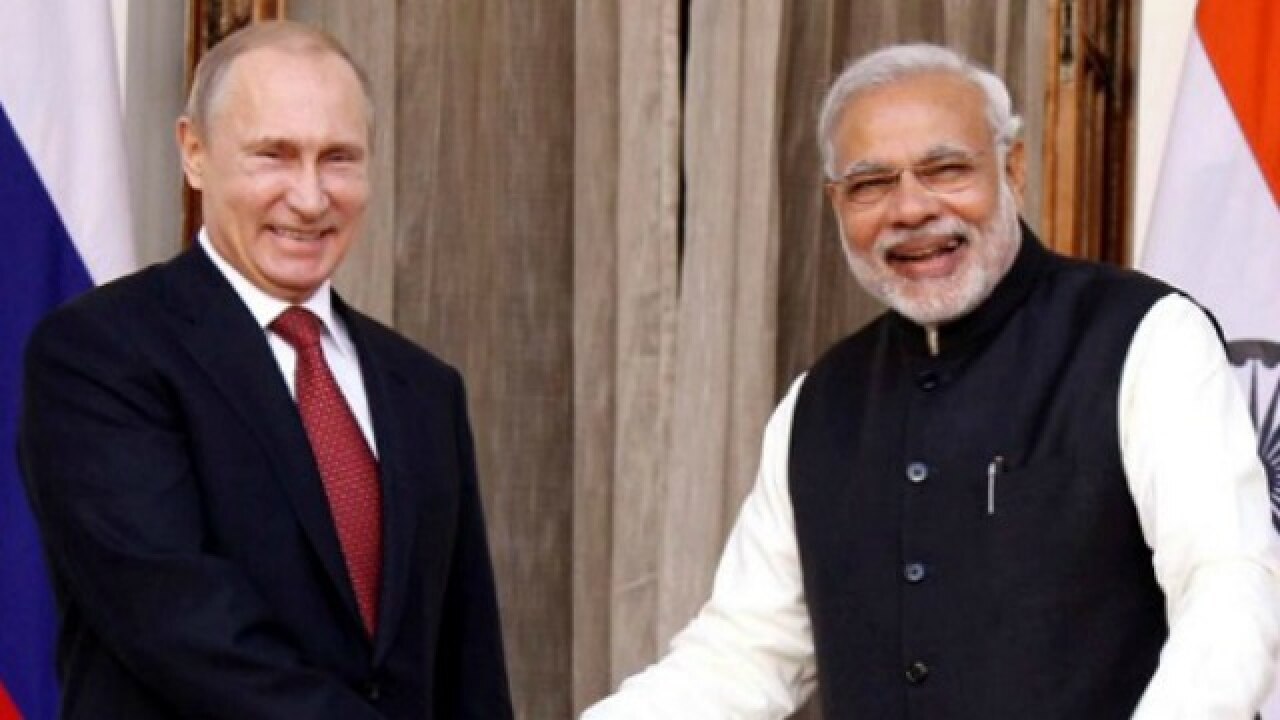
PM Narendra Modi is scheduled to visit Russia on December 23-24 to hold an annual summit with Russian President Vladimir Putin.
In addition to inking agreements on furthering the Kudankulam Nuclear Power Plant beyond stage 1 & 2, they are likely to push forward a plan to assemble Russian Kamov-226T helicopters in India. It is a light multipurpose helicopter and is meant to replace Chetak and Cheetah. The helicopters will be built primarily for the Indian armed forces and also for exports. Russia has reportedly offered full manufacture in India. India’s Ministry of Defence is currently scouting to choose a public or private sector partner company from within India.
Ahead of the visit, Defence Acquisition Council (DAC) also approved purchase of the very potent Russian S-400 air defence missile system with a range of 400 km. Five units would cost Rs 40,000 crores. Only preliminary discussions may take place at this stage.
Since the early 1960s, Soviet Union/Russia has been India’s largest defence weapons supplier. At the height of the Cold War, 85% of Indian Navy, 75% of Indian Air Force and over 50% of Indian Army equipment were of Russian origin. Purchase of Jaguar and Mirage-2000 aircraft in 1970-80s was a major departure. There was always a strong desire to move to alternative sources. The rise of China and desire of USA and the West to move closer to India resulted in offers of modern weapons that were hitherto not available.
In fact, Russia was somewhat upset when its MiG-35 lost to the French Dassault Rafale in the MMRCA contest; and also when IAF chose to buy the Boeing Chinook CH-47 heavy-lift helicopter over the only competitor Russian Mi-26; and the Boeing Apache-64 D won the attack helicopter competition against the Russian Mi-28 N Night Hunter. Six Airbus A330 tanker aircraft are being inducted in preference to Russian IL-78. Earlier, the India Navy chose the Boeing P-8I Poseidon to replace the ageing Russian TU-142. On the other hand, India was upset with Russia for reportedly agreeing to sell four Mi-35M - very modern attack helicopters - to Pakistan to strengthen their counter terror capability.
The Indian Army’s armour has been dominated by Russian T-72 and T-90 tanks. The mechanised infantry uses Russian infantry combat vehicles. Indian Navy’s aircraft carrier Vikramaditya, the latest fighter aircraft MiG-29K, many of the frigates and most of its submarine fleet are of Russian origin.
For years, our Navy has flown variants of Russian Kamov helicopters. BrahMos supersonic cruise missile is an Indo-Russian joint venture for the three services. Indian Air Force (IAF) will soon have all 272 Sukhoi Su-30 MKI already committed. More orders are likely. IAF recently upgraded MiG-29s. IL-76 and An-32 transport aircraft, the AEW&C and Air-refuelling aircraft are all Russian origin. Nearly 200 Russian Mi-17 helicopter variants will dominate IAF’s medium lift helicopter fleet for next two decades. It will also act as the VVIP helicopter till a new one is decided.
Nearly 400 Kamov-226T will join the three armed forces. The surface-to-air and air-to-air missiles are mostly Russian. IAF is already committed to many future projects with Russians. A sum of Rs 40,000 crore is committed for just the design and development of the Fifth Generation Fighter Aircraft (FGFA). 214 aircrafts are planned to be inducted into IAF at a cost of Rs 670 crores a piece. There are already delays and cost escalation. A joint venture 20-tonne Medium-lift Transport Aircraft (MTA) will finally take-off early next year with both sides agreeing to commit funds. Is the balance still tilted heavily towards the Russians?
India’s experience of the last five decades is that the Russian weapon systems are rugged and fairly good operationally. While they are initially relatively inexpensive, over the years, life-cycle costs work-out much higher than Western counterparts. Poor maintenance support often resulted in lower service abilities and sometimes, accidents. With so many defence projects already unfolding, it is an umbilical cord that will stay connected in the 21st century.